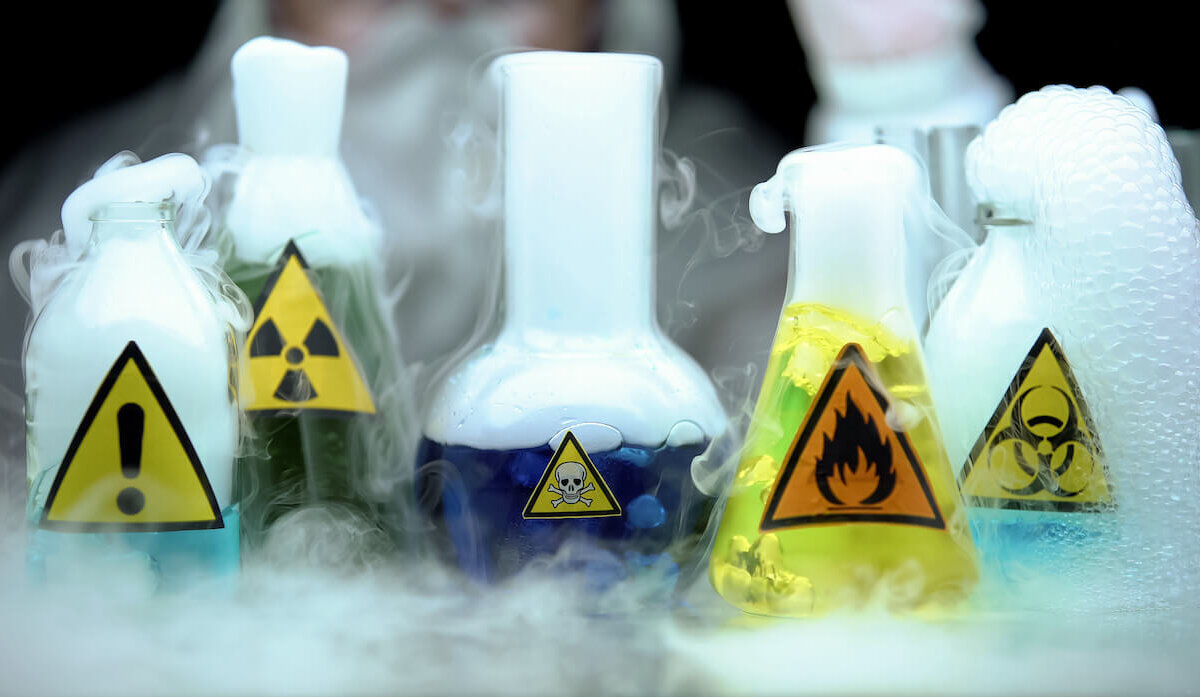Do you know how many individual elements and chemical compounds are required to make a circuit board? I don’t. There are dozens, perhaps more. The list covers much of the periodic table.
Making the semiconductor industry supply chain more environmentally responsible involves considering how we extract, produce, use, and dispose of these various compounds. The issue goes beyond reducing waste. Some of the compounds we use are extremely hazardous to human health and the environment.
Workers must be adequately protected from exposure. That might be the easier problem to address, however. Filtration and personal protective equipment significantly reduce risk. The greater hazard is when these compounds contaminate our water, air, and soil.
You may have heard the warnings about “forever chemicals.” This class of perfluorochemicals, known as PFAS, are carcinogenic, persistent, and bio-accumulative. That means that they do not disappear. With every exposure, they accumulate in the body, increasing the risk of cancer and other diseases.
I first heard about PFAS when I read a 2016 article in the New York Times, “The Lawyer Who Became DuPont’s Worst Nightmare.” The article tells the story of a community in West Virginia where DuPont was dumping toxic waste contaminated with perfluorooctanoic acid (PFOA). The whole saga is spelled out in attorney Rob Bilott’s book Exposure and the film Dark Waters based on the book.
PFOA was used to make Teflon coatings. DuPont called the compound C8 because of the chain of eight carbon atoms in its structure. Its high melting point and low coefficient of friction made it ideal for nonstick coatings. But applications extend well beyond cookware.
PFAS chemicals are used extensively in semiconductor manufacturing. They coat and lubricate equipment and components. They appear as ingredients in etchants and cleaning fluids. In some cases, PFAS chemicals remain in the end products.
Industry groups, including SEMI, claim that PFAS chemicals are essential to semiconductor manufacturing and that it is not possible to remove them. So, what are suppliers to do?
Letter Versus Spirit of the Law
Manufacturers are not inclined to remove chemicals from their supply chain merely because of suspected toxicity. They have chosen these compounds for their desirable properties. They have spent years, or even decades, developing processes that rely on specific chemicals.
Besides, it seems like we see warnings about carcinogens everywhere we turn. We question whether we can distinguish what is truly dangerous. Sometimes, though, scientists can demonstrate cause and effect to the extent that governments step in to regulate the compounds.
When governments enact bans on particular chemicals, companies are forced to find substitutions. They often turn to related compounds with similar properties. That approach makes sense from a practical perspective. A slightly different chemical from the same class can more easily be a drop-in replacement. That means faster changeover and no need to revamp an entire production process.
Bans tend to happen one chemical compound at a time. That makes it less cumbersome for chemical suppliers. They can switch to a similar chemical relatively quickly. For example, when the government banned the plasticizer bisphenol-A (BPA) in baby bottles, manufacturers switched to bisphenol-S (BPS). When bans on PFOA were imminent, manufacturers turned to PFAS compounds with six instead of eight carbon atoms in each molecule for some applications. The assumption was that the C6 compounds were safer.
From the supplier’s viewpoint, this approach is reasonable and effective. They comply with the law while continuing production and maintaining product performance, so all is well.
Unfortunately, all is not well. The problem is that compounds with nearly identical properties often come with identical toxicity profiles. There are thousands of PFAS chemicals, and they are all toxic in the same way.
The European Union has proposed new legislation that would expand bans on C8 compounds to a wide range of PFAS chemicals. The annex would cover C9-C14 PFAS compounds plus their salts and precursors. Other proposed regulations would cover PFAS based not on the number of carbon atoms in the chain but on the intended use. The United States is considering regulations that would require companies to report on PFAS usage and handling.
There are always exemptions, just as we have seen with the Restriction on Hazardous Substances (RoHS) legislation. The International Chemical Secretariat, ChemSec, explains the confusing legislative situation in a recent article. I like the title: “How many PFAS bans does it take to ban PFAS?”
How Should Suppliers Respond to Concerns about PFAS Chemicals?
The semiconductor industry is in a difficult spot regarding PFAS chemicals. If high-performing, PFAS-free substitutes were readily available, the answer would be simple. Start phasing PFAS out immediately. Develop a schedule for a complete replacement that recognizes the time required for suppliers to evaluate and incorporate the new compounds.
In the absence of known replacements, I see two approaches. One is to insist that not only are semiconductors essential to society, but PFAS chemicals are also essential to semiconductor production and irreplaceable. Acceptable substitutes do not currently exist, and they could not possibly be developed in the next decade. In that case, the goal is to work with government officials to convince them to include a non-expiring exemption for our industry.
The risk of the first approach is that it gives the industry a free pass. There is no incentive to find ways to mitigate the harm that PFAS chemicals cause.
The second approach is more nuanced. The industry can push for an exemption while devoting resources to improving the handling of PFAS chemicals to reduce exposure risk for workers and surrounding communities. Manufacturers can also invest in research into safer alternatives. That might involve supporting startups or universities working on the problem, in addition to or instead of in-house research.
The semiconductor industry also has an opportunity to decide how to respond to reporting requirements. Should they willingly and openly report their PFAS use or resist doing so? I believe in openness and transparency. Regulators will see the extent of PFAS use throughout the industry, and suppliers will have data they can use to evaluate their options.
If suppliers choose to investigate alternatives to PFAS chemicals, they will need to make sure that whatever they develop is equivalent to or better than what they are using today. New chemicals will need to meet performance requirements and eliminate toxicity without introducing unintended consequences. That may or may not be possible. But it is something worth evaluating.



















